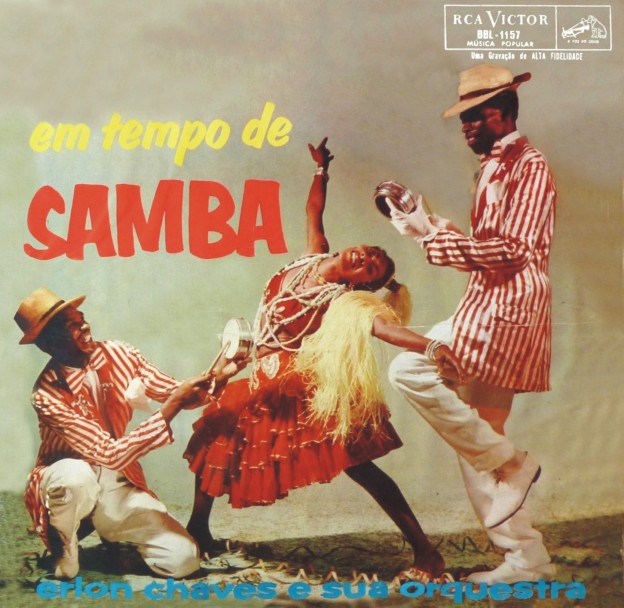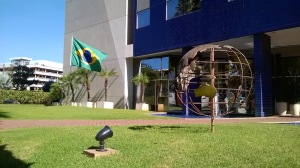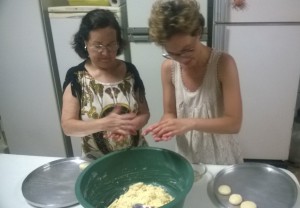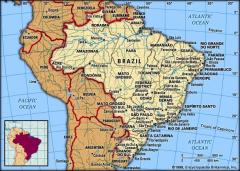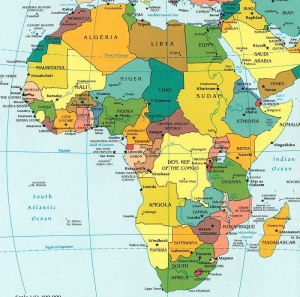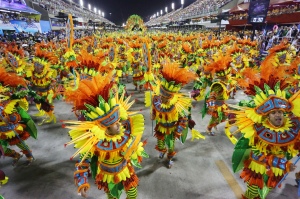I am discovering again the Brazilian culture, I love the people and the way they approach you, in an informal and kind way, teaching you samba steps and offering you smiles and happiness with music and joy.
View of the city of Goiânia, downtown
Along with dancing, which I am a real fan of and I love experimenting new dance styles, I am listening new Brazilian samba songs and authors that I wish to share with you. In my spare holiday time, I am meeting great people, learning to cook Pão de Queijo, which is one of the most wondrous and delicious food you can ever taste in all parts of Brazil. Here the recipe, the secret is  polvinho azedo which in English is called sour starch and it comes from manioc or mostly known as Cassava, a woody shrub cultivated in tropical and subtropical areas of South America. It is a major source of carbohydrates and it looks like a tuber. When dried, the Cassava is called tapioca.
polvinho azedo which in English is called sour starch and it comes from manioc or mostly known as Cassava, a woody shrub cultivated in tropical and subtropical areas of South America. It is a major source of carbohydrates and it looks like a tuber. When dried, the Cassava is called tapioca.
photo 1. preparing Pão de queijo with Miss Marina in the city of Caldas Novas photo 2. Manioc roots in the fruits&veggies market of the city of Goiânia
Samba dance finds its roots in Africa via the West African slave trade and African religious traditions, particularly Angola and the Congo. It is recognized as the symbol of Brazil and the Brazilian Carnival and it is considered one of the most popular Brazilian cultural expressions. The United Nations Educational, Scientific and Cultural Organization proclaimed Samba de Roda of the Recôncavo of Bahia a UNESCO Cultural Heritage of Humanity in 2005. Samba de Roda, which involves music, dance and poetry, developed in the State of Bahia during the XVII century and it encompasses many different rhythms, tunes, drumming and dances of various periods and areas of the Brazilian territory.
In the indigenous language, “samba” means roda de dança, or a circle to dance since the indigenous peoples dances in celebration on many occasions, such as the celebration of popular Catholic festivals, Amerindian or Afro-Brazilian religious ceremonies, but was also practiced as improvisation. The choreography is often spontaneous and is based on movements of the feet, legs and hips.
The rhythm of samba is the unusually accented syncopated beat. The syncopated rhythm is also an indication of Black resistance against cultural assimilation. The Samba of Roda was considered an expression of freedom and identity of the unprivileged and became a means of liberation.
Samba de Roda was eventually taken by migrants to Rio de Janeiro, where it influenced the evolution of the urban samba that became a symbol of Brazilian national identity in the XX century.
Annual Carnival in Rio de Janeiro with a colorful parade of Escolas de Samba
The musical instruments used for playing samba are cavaquinho– a small string instrument of the European guitar family with four or gut strings and  various types of guitar, and various percussion instruments such as tamborim. It is a 2/4 tempo varies with the conscious use of a sung chorus to a batucada rhythm, a substyle of samba referring to the African influences Brazilian percussive style, usually performed by an ensemble, known as bateria, at a fast and repetitive pace. Other instruments include snare drums called caixas, agogô bells, surdos, ganzas/ chocalho (shakers), timbal, pandeiro and the repinique. The apito is often used by the leader to signal breaks and calls. The most interesting instrument which gives the special sound of samba is the cuica, listen to its solo sound here, and here in a samba song.
various types of guitar, and various percussion instruments such as tamborim. It is a 2/4 tempo varies with the conscious use of a sung chorus to a batucada rhythm, a substyle of samba referring to the African influences Brazilian percussive style, usually performed by an ensemble, known as bateria, at a fast and repetitive pace. Other instruments include snare drums called caixas, agogô bells, surdos, ganzas/ chocalho (shakers), timbal, pandeiro and the repinique. The apito is often used by the leader to signal breaks and calls. The most interesting instrument which gives the special sound of samba is the cuica, listen to its solo sound here, and here in a samba song.
The Samba National Day is celebrated on December 2. The date was established at the initiative of Luis Monteiro da Costa, an Alderman of Salvador, in honor of the Brazilian composer, pianist, soccer commentator and talent-show TV and radio host Ary Barroso. He composed “Na Baixa do Sapateiro” even though he had never been in Bahia. Thus 2 December marked the first visit of Ary Barroso to Salvador. Initially, this day was celebrated only in Salvador, but eventually it turned into a national holiday.
Enjoy the colors of the Samba and why not becoming a Passista (Samba dancer!) ? 🙂
Samba Playlist:
Não deixe o Samba morrer– Maria Rita
Roda- Elis Regina
Canto de Ossanha ( A Vida tem Sempre Razão)– Seu Jorge
Saudosa Maloca– Herois de Botequim
Magalenha– Sergio Mendes
Nas asas da da canção– Nelson Sargento
Expressão do teu olhar- Candeia
Sem ilusão– Elton Medeiros
Miragem– Guilherme de Brito
A flor e o espinho– Nelson Cavaquinho
Quem Me Vê Sorrindo– Cartola
O sol e a Brisa– Zeca Pagodinho
Sede- Jorge Aragão
Sabor do Samba– Patricio Teixeira
Vai Saudade- Heitor dos Prazeres (1965)
Este samba foi feito pra você – Mário Reis (1935)
Para O Samba Entrar No Céu- Almirante & Bando de Tangarás (1931)
Brasil Pandeiro– Beth Carvalho e Ivete Sangalo
Herois de Botequim in Café Nice, Goiânia- Brazil
